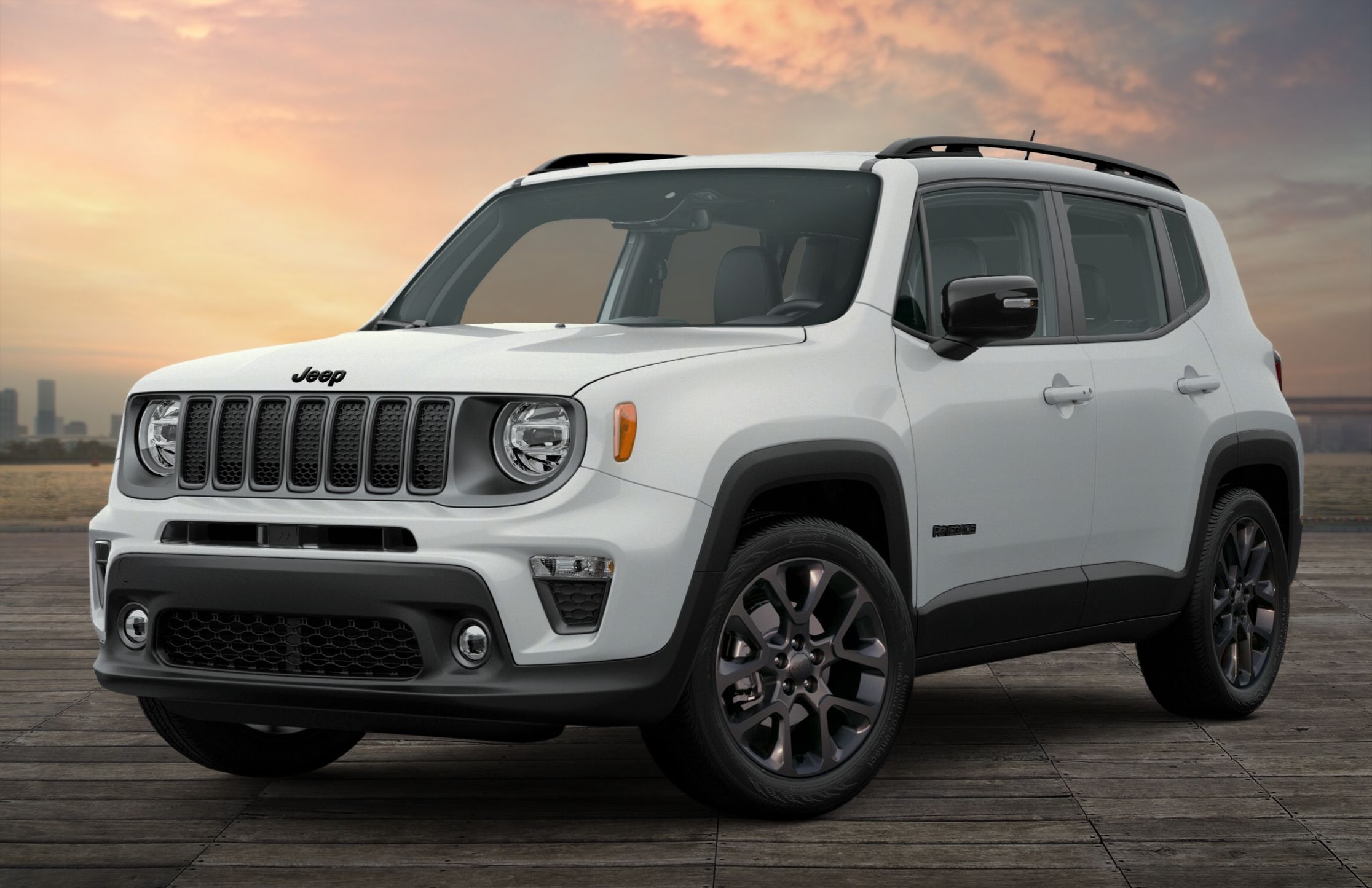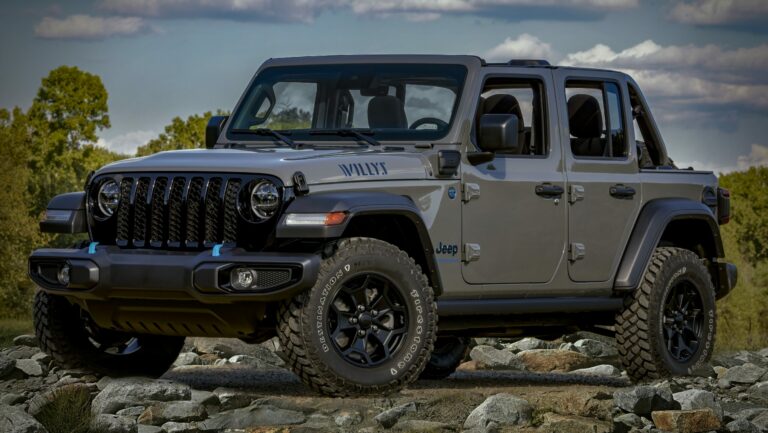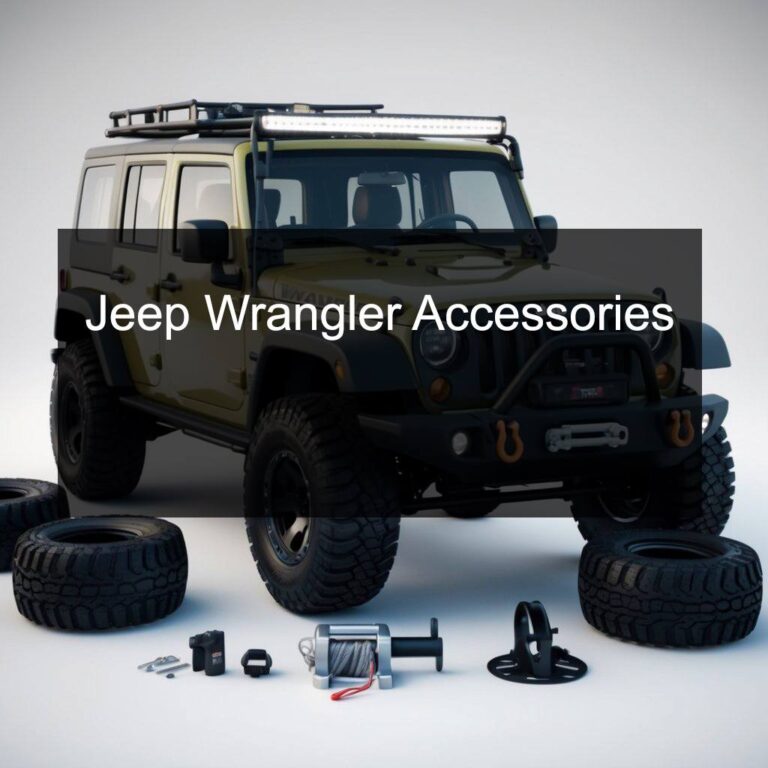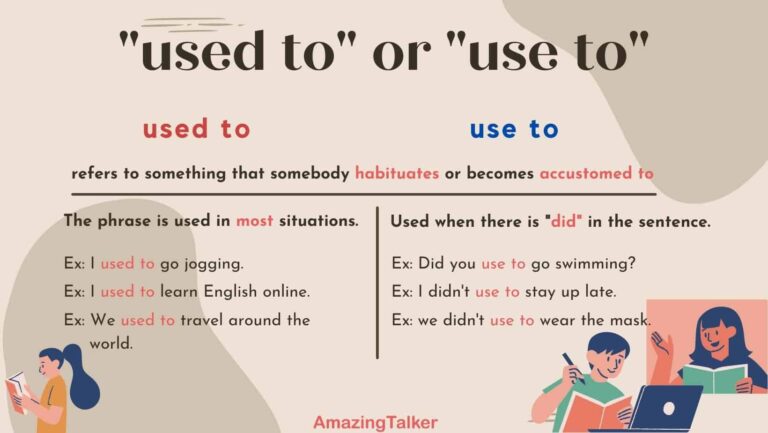Jeep XJ Axles For Sale: Your Ultimate Guide to Finding the Right Foundation
Jeep XJ Axles For Sale: Your Ultimate Guide to Finding the Right Foundation jeeps.truckstrend.com
The Jeep Cherokee XJ, a legendary vehicle known for its rugged reliability and unparalleled off-road capability, has cemented its place as a cornerstone of the 4×4 community. Whether you’re a dedicated rock crawler, an overland enthusiast, or simply maintaining a beloved daily driver, the axles are the backbone of your XJ’s performance. Over time, these critical components can wear out, suffer damage, or simply prove insufficient for ambitious upgrades like larger tires and more aggressive off-road adventures. This often leads XJ owners to the vast and sometimes bewildering market of "Jeep XJ axles for sale."
This comprehensive guide is designed to navigate that market, offering insights into understanding, finding, evaluating, and ultimately acquiring the perfect axles for your Jeep Cherokee XJ. From stock replacements to robust upgrades, we’ll cover everything you need to know to make an informed decision and ensure your XJ remains a formidable force on and off the pavement.
Jeep XJ Axles For Sale: Your Ultimate Guide to Finding the Right Foundation
Understanding Jeep XJ Axles: The Stock Foundation
Before diving into the "for sale" market, it’s crucial to understand the axles that originally equipped the Jeep Cherokee XJ. Knowing their strengths, weaknesses, and common variations will inform your buying decisions.
Front Axles:
- Dana 30 (D30): Nearly all XJs came equipped with a high-pinion Dana 30 front axle (low-pinion in some early models, and high-pinion for most ’84-’99 models). This axle is generally considered robust for stock tire sizes (up to 31-32 inches) and moderate off-roading. Its high-pinion design offers better driveshaft angles and ground clearance. While capable, it can be prone to bending axle tubes or breaking U-joints/shafts under extreme abuse, especially with larger tires (33 inches and above) and aggressive driving.
Rear Axles:
- Dana 35 (D35c): This was the most common rear axle in the XJ, particularly in models without the Up-Country suspension package or certain tow packages. The D35 is widely regarded as the weakest link in the XJ drivetrain. Its C-clip axle shafts and small ring and pinion make it susceptible to failure, especially with larger tires, lockers, or aggressive driving. Many XJ owners opt to replace or upgrade this axle.
- Chrysler 8.25 (C8.25): Found in many XJs from mid-1991 onwards (excluding ABS-equipped models and some early models), the Chrysler 8.25 is a significant improvement over the Dana 35. It features a larger ring gear (8.25 inches vs. 7.5 inches for the D35), stronger axle shafts (27-spline pre-1997, 29-spline 1997-2001), and non-C-clip design for the 29-spline versions. The 29-spline C8.25 is often considered a "poor man’s Dana 44" and is a popular choice for those wanting a stronger rear axle without a full swap.

Why Are XJ Axles For Sale? Common Scenarios
Axles from Jeep XJs, or axles suitable for XJ swaps, enter the market for several reasons:
- Upgrades: Many XJ owners upgrade their stock axles to stronger units (e.g., Dana 44, Ford 8.8, Dana 60) for larger tires, extreme off-roading, or increased durability. Their old, stock axles then become available.
- Damage/Replacement: Accidents, off-road abuse, or simply old age can lead to bent axle tubes, damaged differentials, or worn-out components. Owners may seek replacement axles rather than costly repairs.
- Parts Vehicles: XJs are often bought as parts vehicles, and their axles are salvaged and sold.
- Gear Ratio Changes: To accommodate larger tires, owners often re-gear their axles. If they find a set of axles with the desired gear ratio already installed, they might purchase them and sell their existing ones.
Types of XJ Axles You’ll Find For Sale
When searching for "Jeep XJ axles for sale," you’ll primarily encounter a few categories:
- Stock Take-Offs: These are axles pulled directly from a running or wrecked XJ, in their original factory configuration.
- Pros: Most affordable option, direct bolt-in fitment (assuming correct year/ABS configuration), readily available.
- Cons: Condition can vary wildly (rust, worn components, bent tubes), may not be strong enough for your intended use, often require servicing (fluids, seals, bearings) before installation.
- Rebuilt/Refurbished Stock Axles: Some sellers or shops will offer stock XJ axles that have been cleaned, inspected, had worn components replaced (bearings, seals), and sometimes painted.
- Pros: Better condition than raw take-offs, potentially ready to install with minimal additional work, may come with a limited warranty.
- Cons: Higher cost than take-offs, quality can vary depending on the rebuilder.
- Upgraded Stock Axles: These are stock XJ axles (usually Dana 30 or Chrysler 8.25) that have been internally strengthened with aftermarket components like chromoly axle shafts, stronger differential covers, or even aftermarket lockers/limited slips.
- Pros: Significantly stronger than stock, still a direct bolt-in.
- Cons: More expensive, often reflect the previous owner’s specific build goals.
- Commonly Swapped Axles (Modified for XJ): While not originally XJ axles, these are highly sought after by XJ owners for their superior strength and are often sold pre-modified or suitable for an XJ swap.
- Ford 8.8 (Rear): A very popular and cost-effective swap, often sourced from Ford Explorers (1995-2001). Stronger than the C8.25, often comes with disc brakes and desired gear ratios. Requires welding new mounting brackets and potentially driveshaft modification.
- Dana 44 (Rear): While some XJs came with a D44 (rare, typically with the tow package in earlier models), most D44s used in XJ swaps come from other vehicles (e.g., Jeep Cherokee Chief, Grand Cherokee ZJ, Ford F-150). A significant strength upgrade. Requires fabrication.
- Larger Axles (Dana 60, 14 Bolt): For extreme builds with very large tires (40+ inches), some XJ owners swap in heavy-duty axles. These require extensive fabrication and are not for the faint of heart or budget-conscious.
Where to Find Jeep XJ Axles For Sale
The hunt for the right axle can take you to various places:
- Online Marketplaces: Craigslist, Facebook Marketplace, eBay are prime hunting grounds. Be specific in your searches (e.g., "XJ Dana 30 3.73," "Chrysler 8.25 XJ").
- Dedicated Jeep Forums & Facebook Groups: Enthusiast communities are excellent resources. Members often sell parts directly, and you can leverage their knowledge for advice. Search for XJ-specific groups or general Jeep parts groups.
- Salvage Yards/Junkyards: A traditional source for used parts. Prices can be low, but condition is often a gamble, and you’ll likely have to pull the axle yourself. Call ahead to check inventory.
- Specialty Off-Road Shops: Some shops might have used axles from customer upgrades or build up and sell refurbished units. They often offer higher quality but at a premium.
- Axle Builders/Fabricators: For custom or heavy-duty swapped axles, these professionals can build exactly what you need, though this is the most expensive option.
Key Considerations When Buying XJ Axles
Purchasing used axles requires careful inspection and consideration to avoid costly mistakes.
-
Condition is Paramount:
- Rust: Surface rust is common, but heavy, flaky rust can indicate structural issues.
- Leaks: Check around the differential cover, pinion seal, and axle tube seals for fluid leaks.
- Bent Tubes: Inspect the axle tubes for any signs of bending or damage, especially on the D30. A straightedge can help.
- Play in Pinion/Wheel Bearings: Grab the driveshaft yolk and try to twist it (pinion play) or push/pull on the wheel hub (wheel bearing play). Excessive play indicates worn bearings.
- Gear Condition (if possible): If the cover is off or can be removed, inspect the ring and pinion teeth for chipping, pitting, or excessive wear.
- Spline Condition: Inspect the ends of the axle shafts for twisted splines.
- Brake Components: Check the condition of calipers, rotors, pads (for disc brakes) or drums, shoes, cylinders (for drum brakes).
-
Gear Ratio: Crucial for matching front and rear axles if you’re replacing both, or for compatibility with your existing axle. The gear ratio is typically stamped on a tag on the differential cover or can be determined by counting teeth.
-
Locker/Limited Slip: Does the axle come with an aftermarket locker or limited-slip differential? This significantly adds to the value and capability. Verify what type it is.
-
Axle Shafts: Are they stock, or have they been upgraded to chromoly? Chromoly shafts are much stronger.
-
Mounting Brackets: For stock XJ axles, ensure the control arm mounts, coil spring perches, shock mounts, and sway bar mounts are intact and not bent. For swapped axles, inquire about the fabrication work – are the brackets welded on correctly and for an XJ application?
-
ABS/Non-ABS: Early XJs had ABS, later ones often did not. Ensure compatibility if you need ABS functionality.
-
Seller Reputation: Buy from reputable sellers or those with good feedback. Ask for detailed photos or videos.
-
Shipping vs. Pickup: Axles are heavy! Factor in shipping costs if you’re buying from a distance. Local pickup is often preferred.
Practical Advice and Actionable Insights
- Know Your Needs: Before you start looking, define what you need. Are you replacing a broken stock axle? Upgrading for larger tires? What tire size do you plan to run?
- Determine Your Budget: Axle prices vary wildly. Set a realistic budget that includes potential repair/maintenance costs (seals, bearings, fluids, new U-joints).
- Inspect Thoroughly: If buying locally, inspect the axle in person. Bring a flashlight, a straightedge, and even a friend who knows axles. Don’t be afraid to ask questions.
- Verify Identification: Confirm the axle type (Dana 30, Dana 35, Chrysler 8.25) and gear ratio.
- Factor in Installation: Will you install it yourself or pay a shop? An axle swap can be complex and may require specialized tools like a welder for custom brackets.
Estimated Price Guide for Jeep XJ Axles For Sale
Prices for used XJ axles vary greatly based on condition, completeness, location, and demand. This table provides a general range.
| Axle Type | Condition/Completeness | Estimated Price Range (USD) | Notes |
|---|---|---|---|
| Dana 30 Front (High Pinion) | Bare Housing (no diff, shafts, brakes) | $50 – $150 | Good for re-tubing or custom builds. |
| Complete (stock shafts, open diff, brakes) | $150 – $400 | Most common find. Expect to replace seals, bearings. | |
| Rebuilt/Upgraded (chromoly shafts, locker) | $800 – $1500+ | Ready to bolt in, significant investment. | |
| Dana 35 Rear | Bare Housing | $20 – $80 | Not recommended for serious builds. |
| Complete (stock shafts, open diff, drum brakes) | $100 – $250 | Often sold cheap due to weakness. | |
| Chrysler 8.25 Rear | Bare Housing | $50 – $150 | Good foundation for a budget build. |
| (27-spline) | Complete (stock shafts, open diff, drum brakes) | $150 – $350 | Solid upgrade over D35. |
| (29-spline) | Complete (stock shafts, open diff, drum brakes) | $250 – $500 | The most desirable stock XJ rear axle. |
| Rebuilt/Upgraded (29-spline, locker, disc) | $700 – $1200+ | Excellent performance for the price. | |
| Ford 8.8 Rear (for XJ swap) | Stock, complete (from Explorer) | $150 – $400 | Requires custom brackets, driveshaft, often re-gear. |
| Modified for XJ (brackets welded, re-geared) | $800 – $1800+ | Ready for bolt-in swap, significant value in included work. | |
| Dana 44 Rear (for XJ swap) | Stock, complete (from other Jeep/truck) | $200 – $600 | Requires significant fabrication for XJ. |
| Modified for XJ (brackets welded, re-geared) | $1000 – $2500+ | High-end upgrade, often includes disc brakes. |
Note: Prices are estimates and can fluctuate based on region, seller, exact condition, and market demand. Always verify what is included with the axle (e.g., brakes, shafts, differential, steering components).
Frequently Asked Questions (FAQ)
Q: What’s the main difference between a Dana 35 and a Chrysler 8.25 rear axle in an XJ?
A: The Chrysler 8.25 is significantly stronger. It has a larger ring gear (8.25" vs. 7.5"), and later versions (1997-2001) came with stronger 29-spline axle shafts compared to the Dana 35’s 27-spline. The 29-spline 8.25 also has non-C-clip axle retention, which is a durability advantage.
Q: Do I need to re-gear my axles if I install larger tires?
A: Yes, it’s highly recommended. Installing larger tires without re-gearing will negatively impact performance, fuel economy, and put extra strain on your drivetrain. If you replace one axle, ensure its gear ratio matches your other axle.
Q: How can I tell what gear ratio an axle has?
A: Look for a metal tag on the differential cover bolts. It often has the ratio stamped on it (e.g., "3.73" or "4.10"). If no tag, you can manually count rotations of the driveshaft vs. the wheel (requires careful attention and knowing if it’s an open or locked diff).
Q: What should I look for when inspecting a used axle?
A: Check for leaks (pinion, axle seals), bent axle tubes (use a straight edge), excessive rust, play in the pinion or wheel bearings, and damage to mounting brackets. Ask about the history of the axle.
Q: Are XJ axles compatible with other Jeep models?
A: While they share common components, direct bolt-in compatibility is generally limited to other XJs (with minor year-to-year variations). Swapping XJ axles into other Jeep models (like a TJ Wrangler) often requires significant fabrication.
Q: How much does an axle swap typically cost if I pay a shop?
A: A professional axle swap can range from $500-$1500+ in labor alone, depending on the complexity of the swap (stock replacement vs. custom fabrication for an 8.8 or D44) and the shop’s rates. This doesn’t include the cost of the axle or any new components (gears, lockers, etc.).
Q: Can I run a locker with a stock Dana 35?
A: It’s generally not recommended, especially with larger tires. The Dana 35 is inherently weak, and adding a locker significantly increases the stress on its components, leading to a higher likelihood of failure.
Conclusion
Finding "Jeep XJ axles for sale" can be a rewarding endeavor, whether you’re looking for a direct replacement or a significant upgrade to boost your Cherokee’s performance. By understanding the different types of axles, knowing where to look, and meticulously evaluating their condition, you can make an informed purchase that ensures your XJ continues to tackle any terrain with confidence. Remember, the right set of axles is the foundation of a reliable and capable Jeep, making your investment worthwhile for countless adventures to come. Happy hunting, and may your XJ always find its way!




